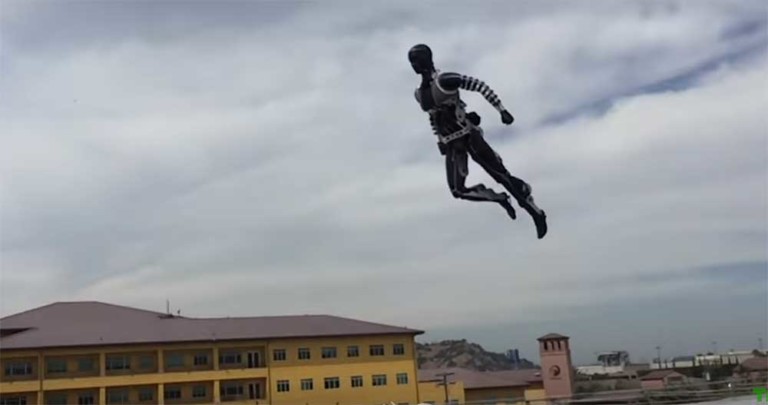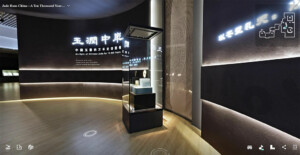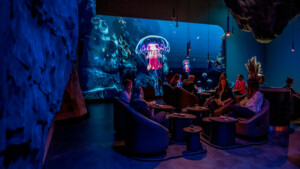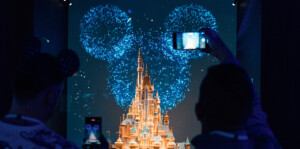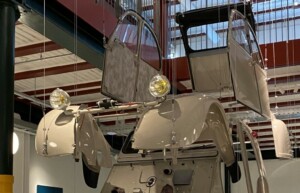Disney Imagineering has created robotic stunt doubles. Stuntronics could change the way that characters move through Disney theme parks – and re-imagine the future of mobile robots.
Robots are nothing new for Disney. The company has been showcasing “animatronic” characters over the last fifty years. From the pneumatic and hydraulic figures of the past to the fully electronic characters of today they bring Disney rides and shows to life throughout the company’s parks.
However Stuntronics represents a bold new step. The Stuntronics humanoid robot can perform stunts just like a human stuntperson. A video shows the figure launching into the air from an aerial swing. It performs several flips before landing in a net. Throughout the whole manoeuvre it keeps control of pose, rotation and centre of mass.
The bot boasts an on-board accelerometer. Gyroscope arrays are supported by laser range finding. It can perform aerial tricks accurately, on target, all the time holding heroic poses in midair.
Disney has not yet revealed when and where the robots could perform. However it’s obvious they could come into their own in attractions. If a scene needed dramatic action, the Stuntronics double could easily fly across the space, working out trajectories and striking poses, hitting its target every time.
Tony Dohi, Principal R&D Imagineer and Morgan Pope, Associate Research Scientist at Disney worked together on the project. The Stuntronics project came out of the Stickman research project, which in turn was born from BRICK (Binary Robotic Inertially Controlled bricK). A metal brick with sensors had the ability to alter its centre of mass to control its spin to hit a specific orientation at a specific height – in other words, to ‘stick the landing’ each and every time.
“Morgan and I got together and said, maybe there’s something here, we’re not really sure,” said Dohi in an interview with TechCrunch. “But let’s poke at it in a bunch of different directions and see what comes out of it.”
“So often our robots are in the uncanny valley where you got a lot of function, but it still doesn’t look quite right,” said Morgan Pope. ”I think here the opposite is true. “When you’re flying through the air, you can have a little bit of function and you can produce a lot of stuff that looks pretty good, because of this really neat physics opportunity — you’ve got these beautiful kinds of parabolas and sine waves that just kind of fall out of rotating and spinning through the air in ways that are hard for people to predict, but that look fantastic.”
Robots are set to be a key trend for the attractions industry. Huis Ten Bosch leads the way with plans for 100 robot staffed hotels by 2021.
Disney Imagineering has created autonomous robot stunt doubles
